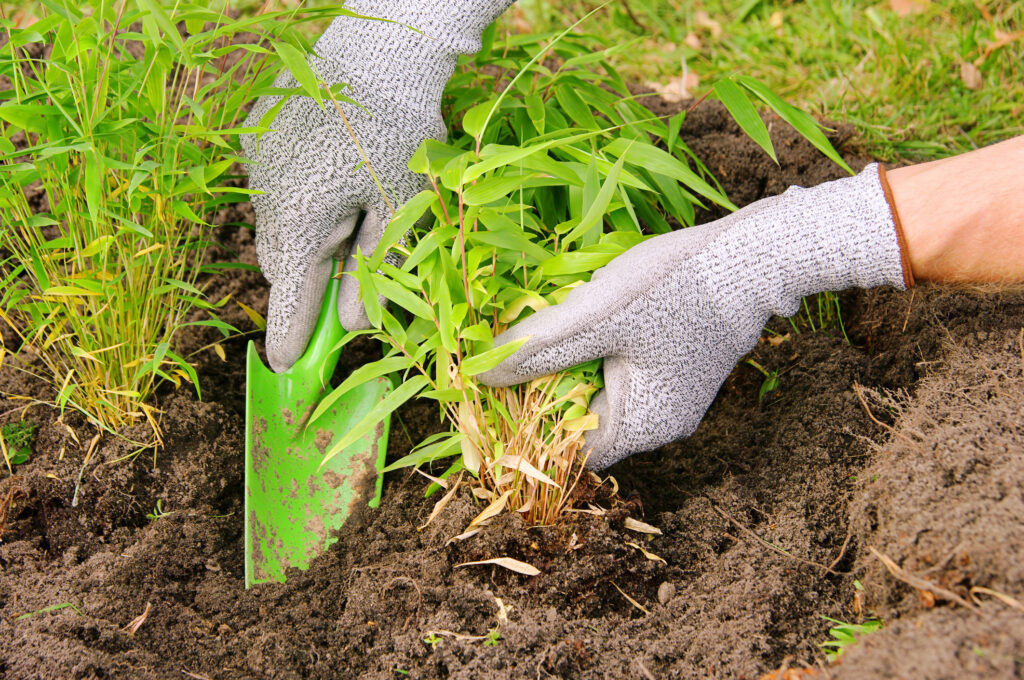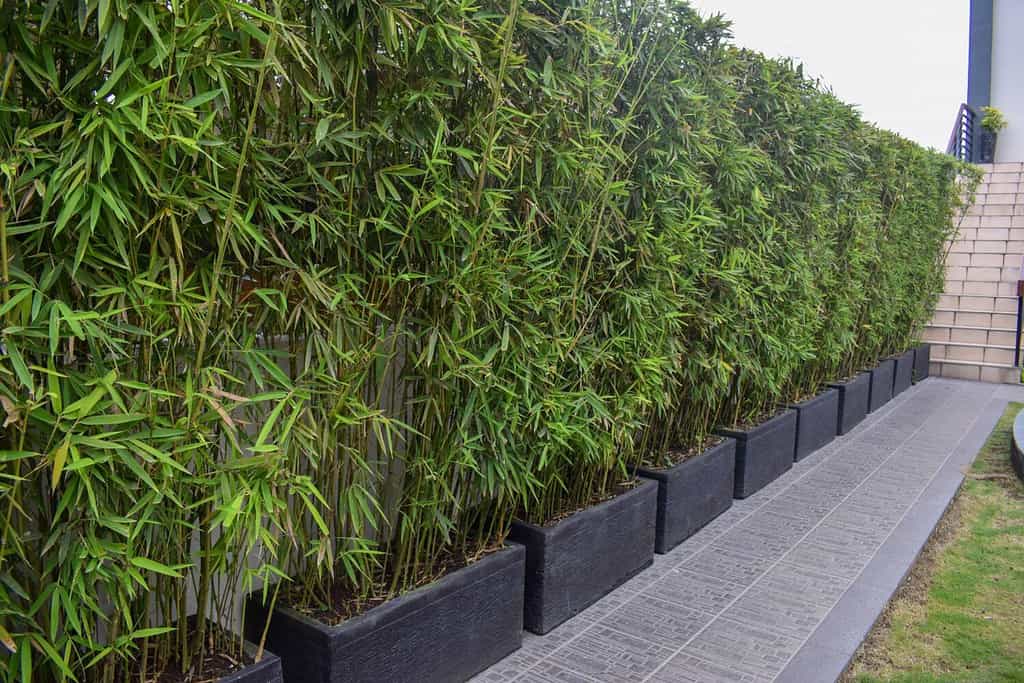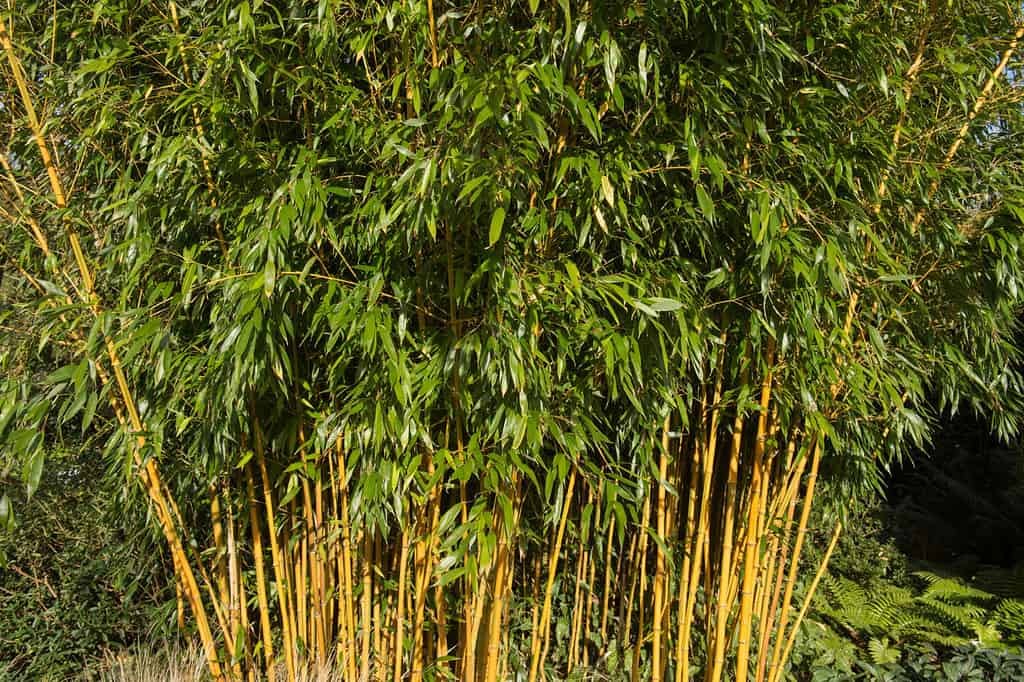Bamboo is a type of grass that grows in tropical and subtropical climates. It is known for its fast growth rate, with some species growing up to several feet per day. Bamboo can be used for many purposes, such as construction materials, furniture, paper products, and even food.
In the United States, bamboo does not grow natively in Ohio due to the climate being too cold for it to thrive. However, some hardy varieties of bamboo have been able to survive in more temperate regions like southern Ohio if properly cared for. Bamboo also makes an attractive ornamental plant with its tall stalks and distinctive leaves and can make a great addition to any garden or landscape.
Does Bamboo Grow in Ohio?

Before planting bamboo, select the type you want to grow and know its soil and watering needs.
©iStock.com/LianeM
Is it possible to cultivate bamboo in Ohio, where winter temperatures can drop drastically? The answer is yes, yet you must select the correct type of bamboo. Most varieties of bamboo thrive in warm, subtropical, and tropical climates, but luckily some can withstand cold temperatures. It is essential to pick a seedling that is specifically designed to endure the local temperatures during winter. The farther north you are located, the fewer options you will have for bamboo species.
When selecting plants for your home, you should be aware of the cold hardiness of each one. The USDA Hardiness map shows that Ohio falls in Zone 6, with some areas in Zone 5. There are a number of types of bamboo that can survive in Zone 6, and even a few varieties that can handle the colder temperatures of Zone 5. If you live in Ohio, you can still have a stunning bamboo plant in your garden. Here are a few of our favorites!
Types of Bamboo to Grow in Ohio
Cold hardy bamboos are a great way for Ohioans to add some tropical beauty and interest to their landscapes. These evergreen plants provide year-round color, texture, and movement, even in the cold winter months when most other plants have lost their leaves. Bamboo can also be used as a privacy hedge or living fence, protecting from the wind while allowing light to pass through. In addition, bamboo is easy to care for and has low water requirements – making it an ideal choice for people looking for an attractive yet low-maintenance plant option. Here are some great zone 5 and 6 bamboo options.
1. Dragon Head Bamboo

can reach heights up to 10 feet and spreads slowly by underground rhizomes, making it an ideal choice for privacy screens and windbreaks in Ohio’s climate.
©Bayu Rachmawati/Shutterstock.com
Dragon Head Bamboo (Fargesia rufa) is a type of cold hardy bamboo native to the mountain regions of China. It is semi-evergreen, meaning it will remain green throughout most of the winter but may turn brown or yellow during colder months when temperatures drop below 15 degrees Fahrenheit. This species prefers full sun and moist, well-drained soil with a pH range between 6 and 7.5. It can reach heights up to 10 feet and spreads slowly by underground rhizomes, making it an ideal choice for privacy screens and windbreaks in Ohio’s climate. The culms are thin and light green with darker stripes running along them that give this plant its name; dragon head bamboo looks like it has small heads on each stem resembling dragons!
2. Bisset Bamboo
Bisset Bamboo – Phyllostachys bissetii – is a running bamboo native to Japan and is known for its hardiness in colder climates. In the US, it is hardy down to zone four! It grows quickly and can reach heights of 25 feet or more with culms (canes) up to 1 inch in diameter. As an ornamental grass, it requires minimal maintenance once established. It prefers moist, well-drained soil but will tolerate a wide range of soils, including clay and sandy loams.
In the Ohio region, this species should be planted in areas that receive at least 6 hours of direct sunlight daily, as it needs plenty of sun exposure to thrive. Although some shade is tolerated, too much shade can result in shorter growth and less robust foliage production. The good news is that Bisset Bamboo has few pests or diseases, so you won’t have to worry about dealing with any problems while caring for your plants!
3. Showy Yellow Grove Bamboo

The Showy Yellow Grove Bamboo prefers full sun and moist, loamy soils with good drainage.
©Peter Turner Photography/Shutterstock.com
Showy Yellow Grove Bamboo (Phyllostachys aureosulcata f. spectabilis) is an ornamental species of giant timber bamboo that is native to the Far East and can be cultivated in Ohio. It grows to a height of up to 35 feet with canes reaching 5 inches in diameter and has yellow-green stripes along its length. The Showy Yellow Grove Bamboo prefers full sun and moist, loamy soils with good drainage, but it’s also tolerant of partial shade and clay soils. This hardy plant is drought resistant once established, making it ideal for gardeners who don’t want to fuss over their plants too much. Its stems are used for ornamental purposes and construction materials such as flooring or furniture making due to their strength and durability. Showy Yellow Grove Bamboo can make an attractive addition to any outdoor space!
4. Incense Bamboo
Incense Bamboo – Phyllostachys atrovaginata is an evergreen, clumping bamboo native to China. It grows in various soils and can reach heights of 10-20 feet with culm diameters up to 1 inch. The leaves are dark green, and the new shoots have a distinctive red-purple color that fades as they age. Incense Bamboo has a strong scent when it flowers, which usually occurs after eight years or more. In Ohio, this species does well in full sun locations where temperatures remain above -15 degrees Fahrenheit in winter months. When growing Incense Bamboo, remember that it will spread rapidly, so consider planting it in pots or other contained areas if you don’t want your landscape overrun by bamboo!
5. Rivercane Bamboo

produces small flowers followed by black-colored berries, which attract birds for food and nesting material.
©Stefan Lambauer/Shutterstock.com
Rivercane bamboo, Arundinaria gigantea ‘Macon,’ is a type of bamboo native to North America. It grows in streambanks and other moist habitats, often forming thickets along water regions. This species can grow up to 20 feet tall and has 8-14 inches-long leaves. The culms (stems) are light green when young but turn yellowish brown as they mature. Rivercane bamboo produces small flowers followed by black-colored berries, which attract birds for food and nesting material. Rivercane Bamboo is able to withstand a wide range of climates and soils, from coastal plains with rich alluvial soil to the Appalachian Mountains at an altitude of 2,000 feet. It has grown in sandy, rocky areas and on mountain slopes.
6. Red Margin Bamboo
Red Margin Bamboo, or Phyllostachys rubromarginata, is native to the temperate regions of China and Japan. It is a very large species of bamboo that can grow up to 40ft in height with 8 inches in diameter culms! It is likely to stay under 20 feet tall in zone five. This type of bamboo has beautiful reddish-brown margins on its leaves and red stripes along its green culm.
Red Margin Bamboo prefers full sun but will tolerate some shade and does best in moist, well-drained soils. It has very good cold hardiness and can survive temperatures below -10 degrees Fahrenheit without damage. Due to this characteristic, it is one of the types of bamboo suitable for growing outdoors in Ohio, where winters can be harsh. If you’re looking for an attractive ornamental grass that can add a tropical touch to your landscape, Red Margin Bamboo may be just what you need!
Summary of 6 Types of Bamboo to Grow in Ohio
| Bamboo Name | Scientific Name | Bamboo Height | USDA Hardiness |
|---|---|---|---|
| Dragon Head Bamboo | Fargesia rufa | 10 feet | Zone 5 or above |
| Bisset Bamboo | Phyllostachys bissetii | 25 feet | Zone 5 or above |
| Showy Yellow Grove Bamboo | Phyllostachys aureosulcata f. spectabilis | 35 feet | Zone 5 or above |
| Incense Bamboo | Phyllostachys atrovaginata | 20 feet | Zone 5 or above |
| Rivercane Bamboo | Arundinaria gigantea ‘Macon’ | 20 feet | Zone 5 or above |
| Red Margin Bamboo | Phyllostachys rubromarginata | 40 feet | Zone 5 or above |
The photo featured at the top of this post is © iStock.com/p-orbital
Thank you for reading! Have some feedback for us? Contact the AZ Animals editorial team.






